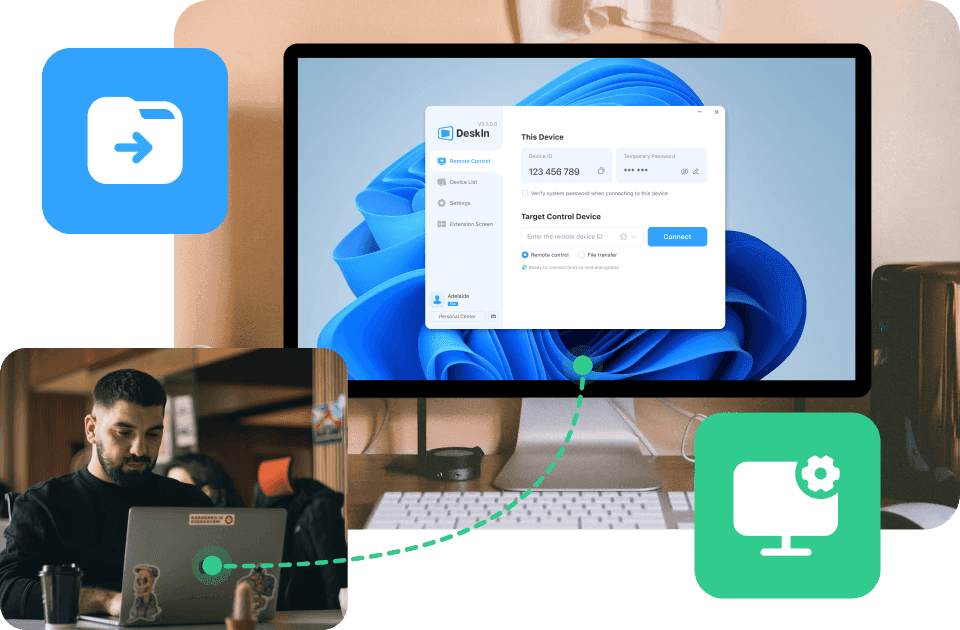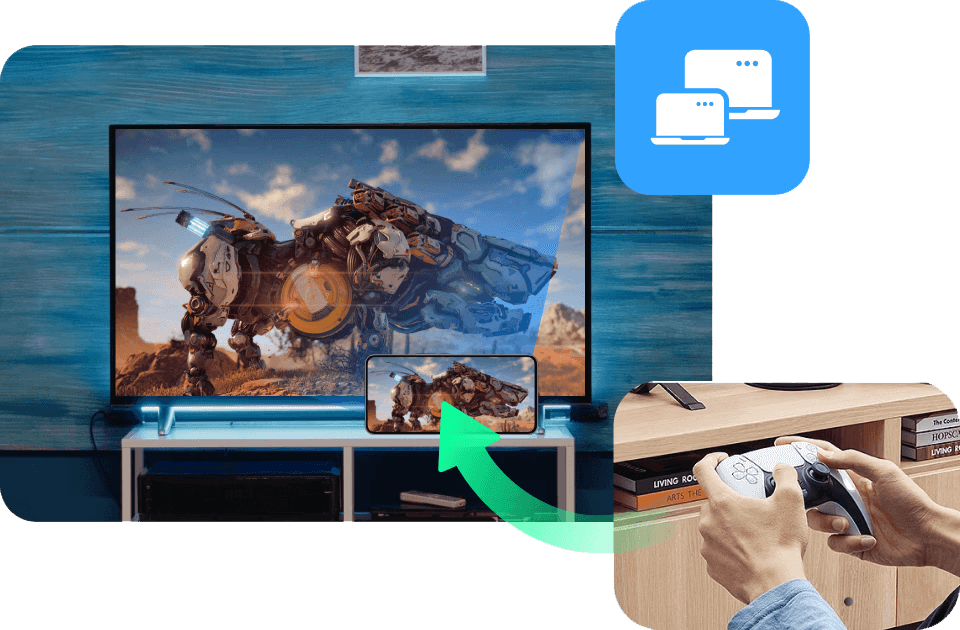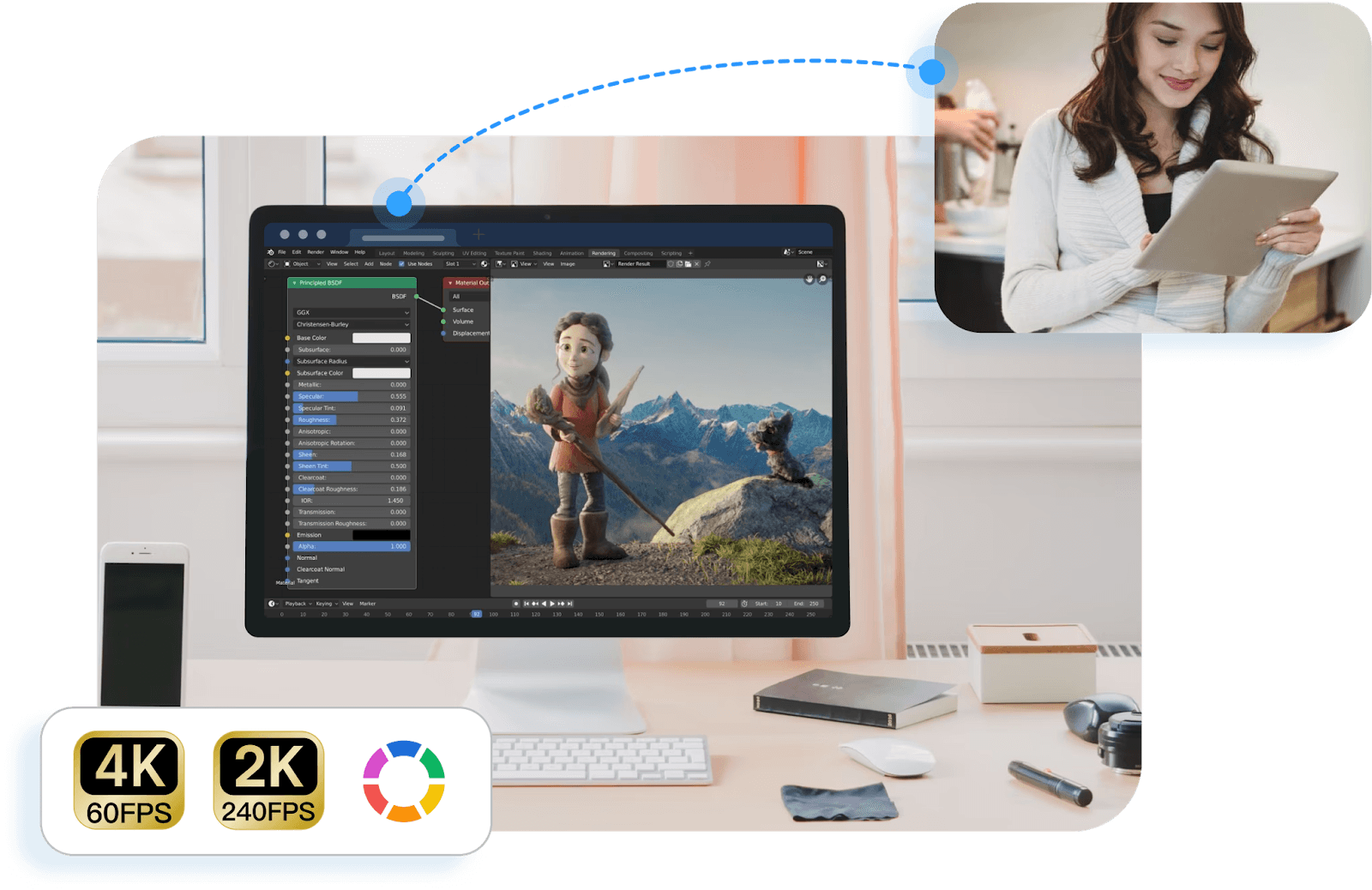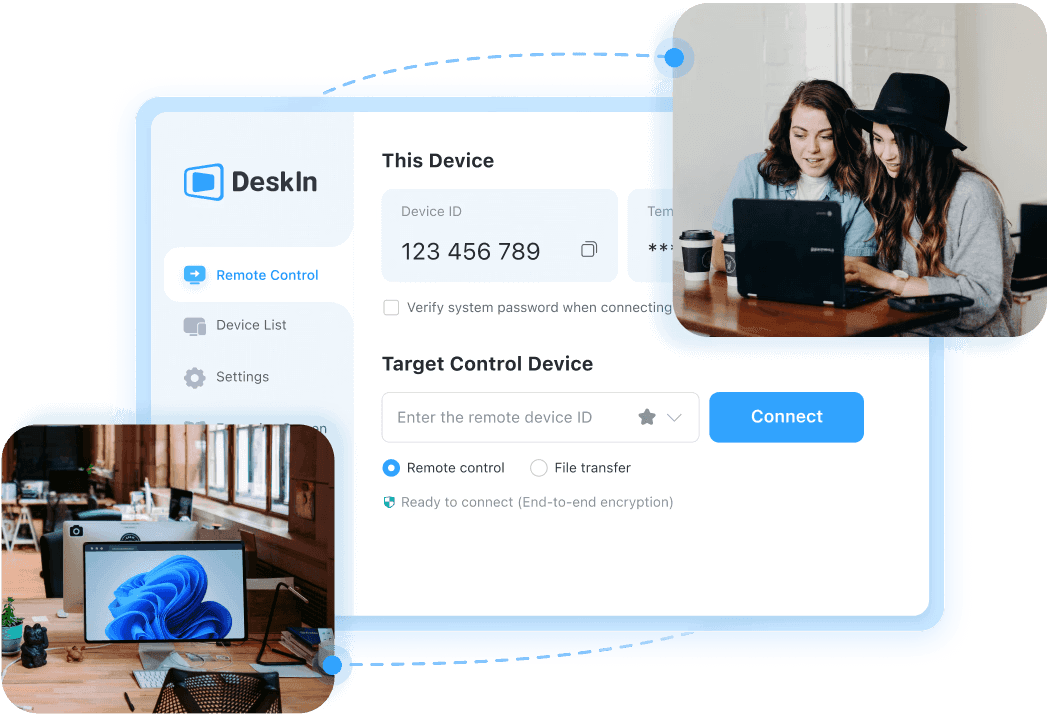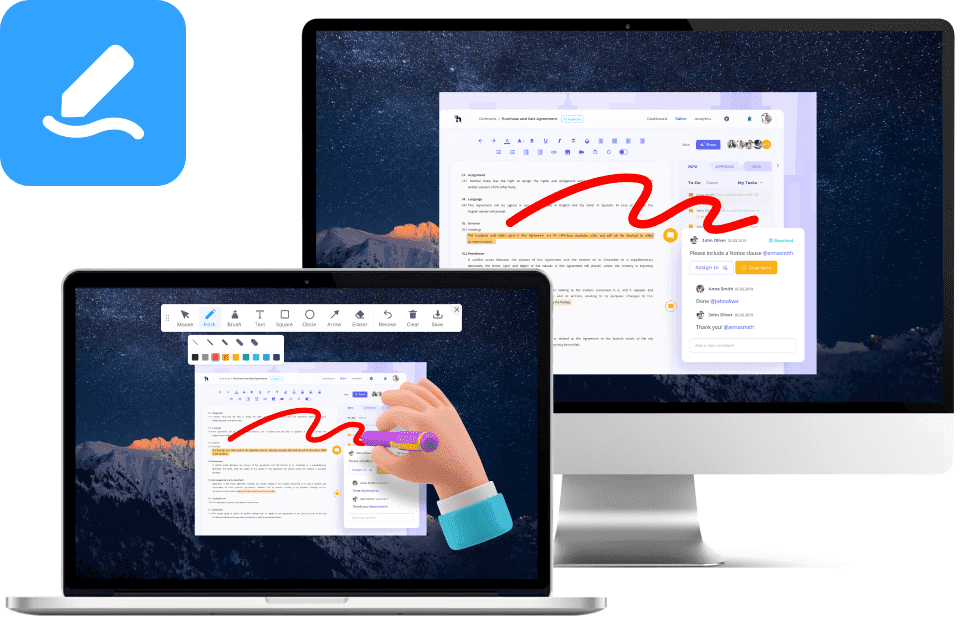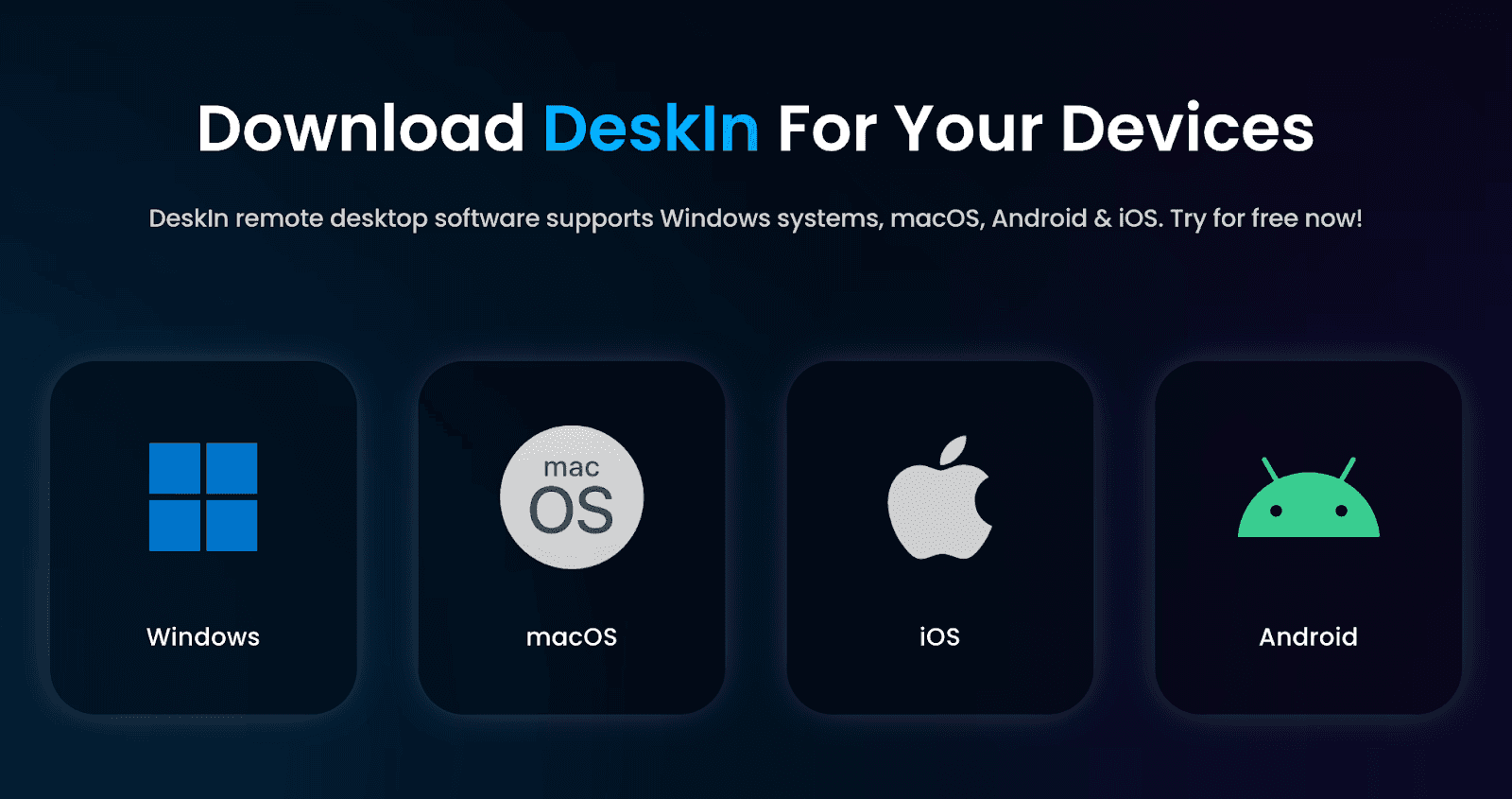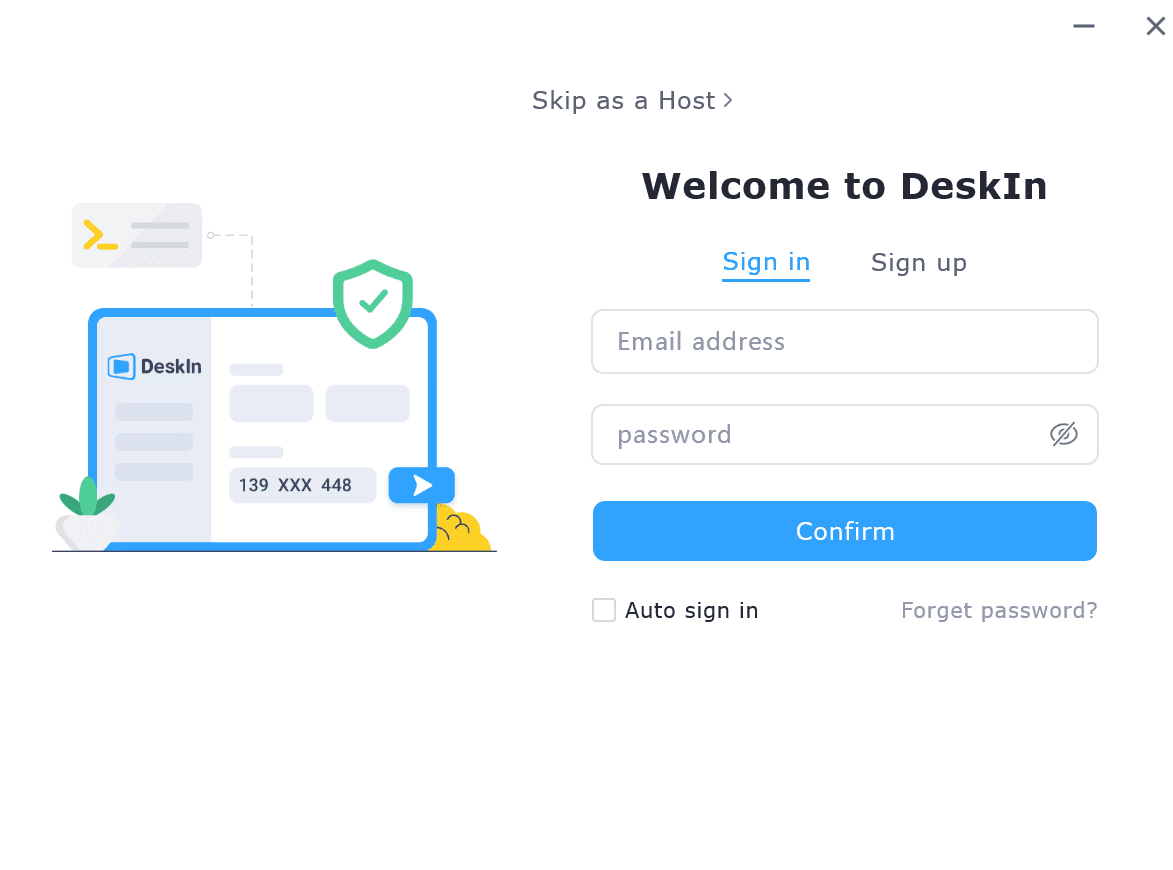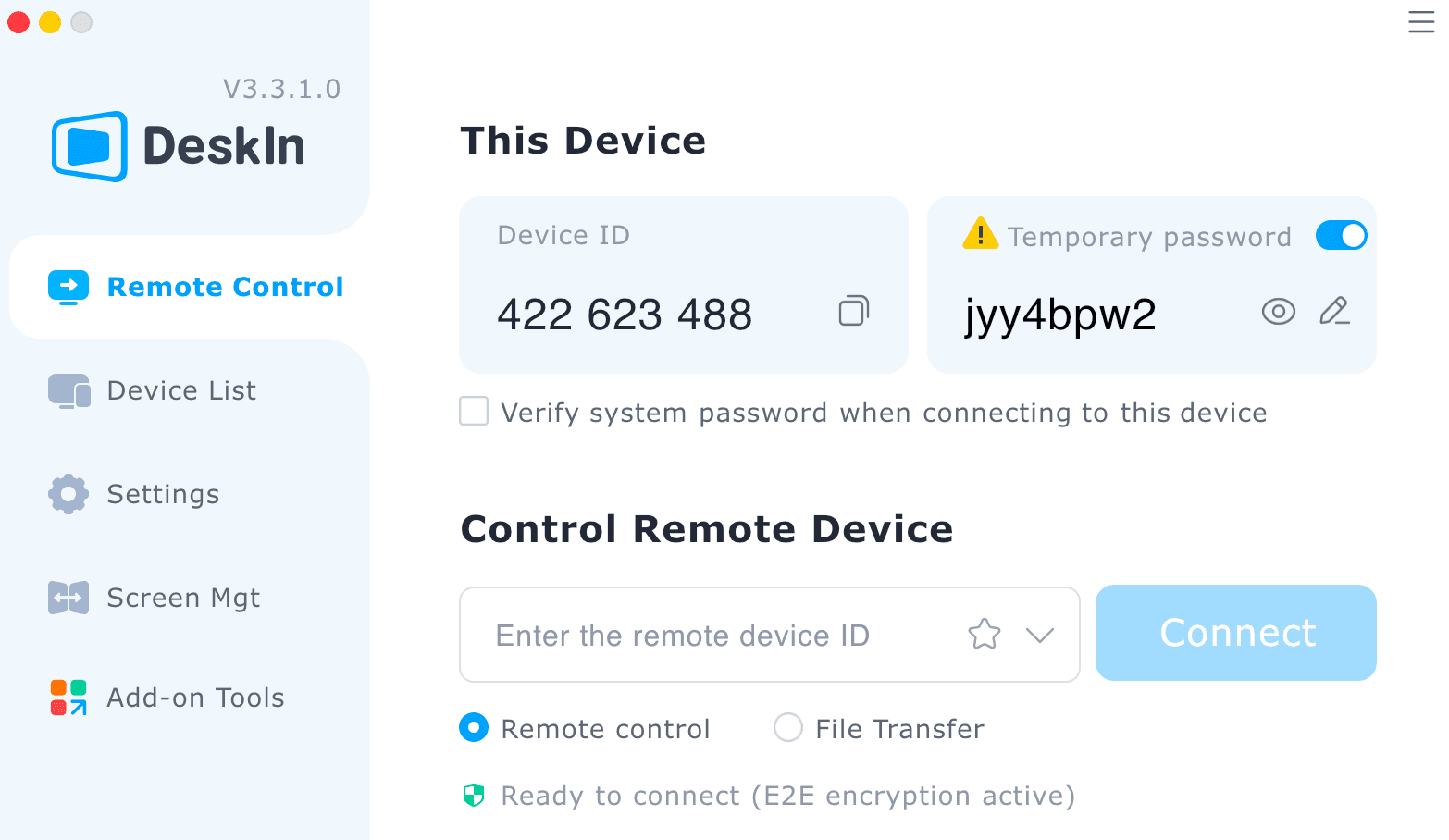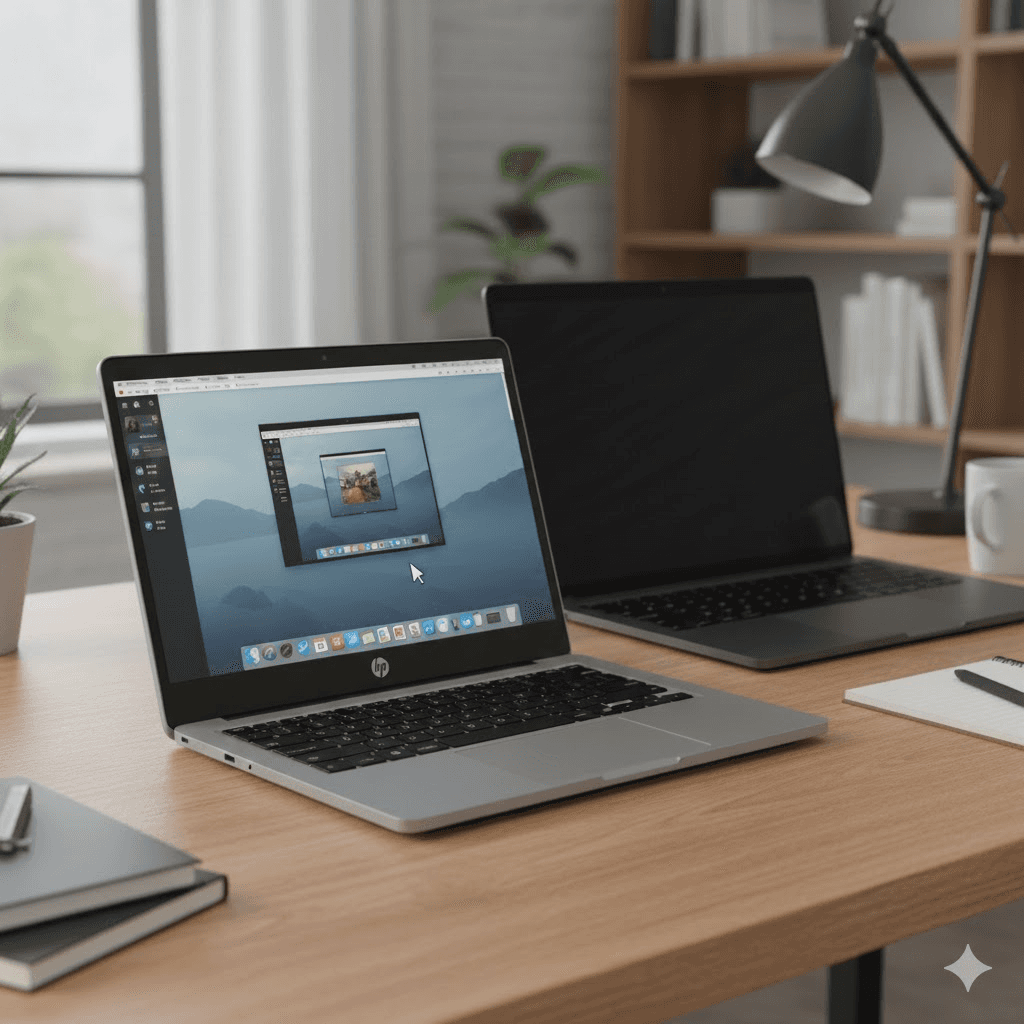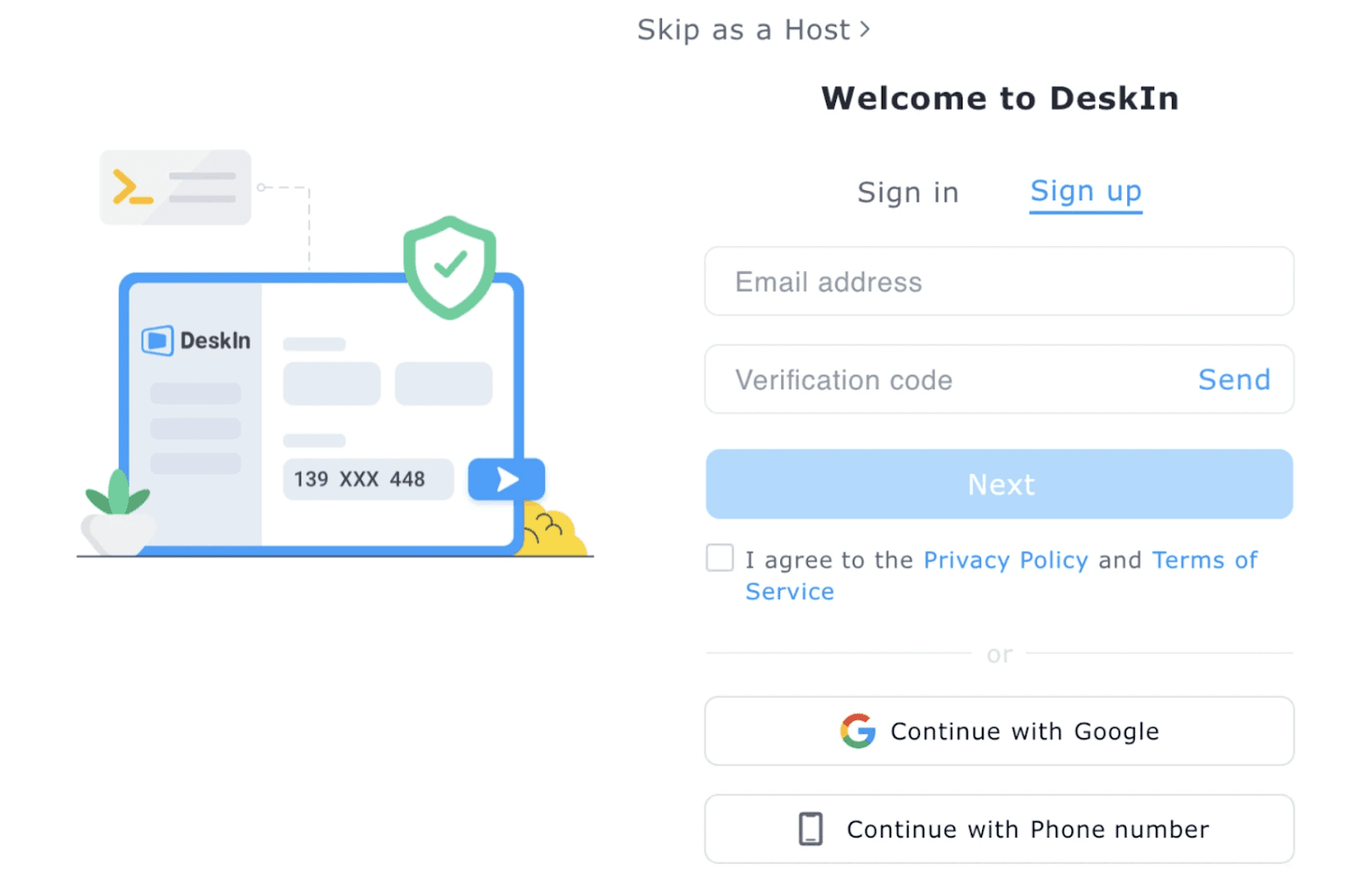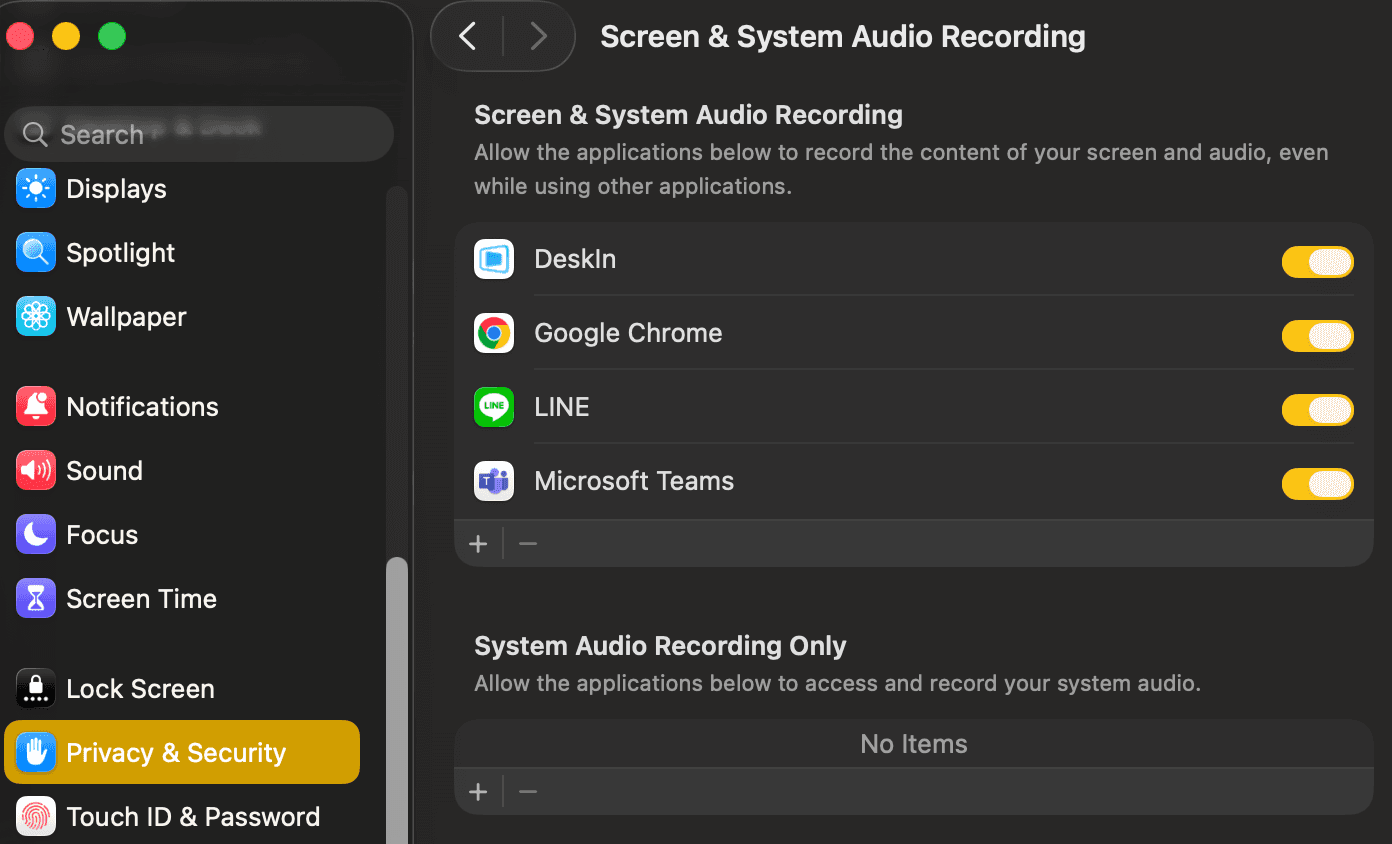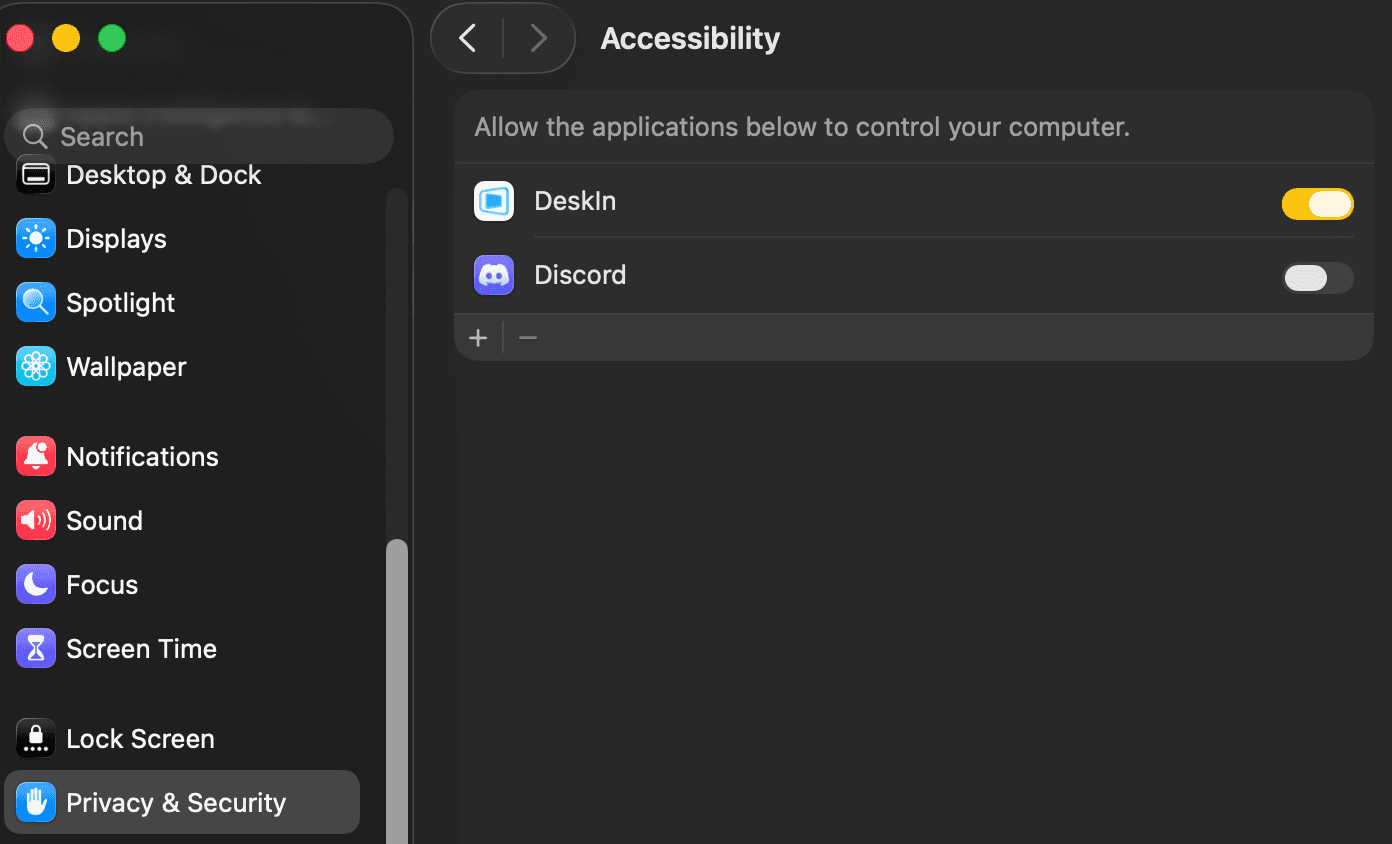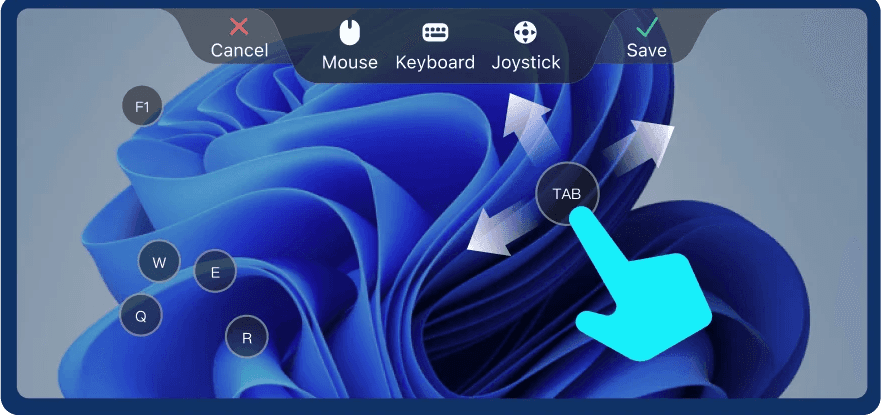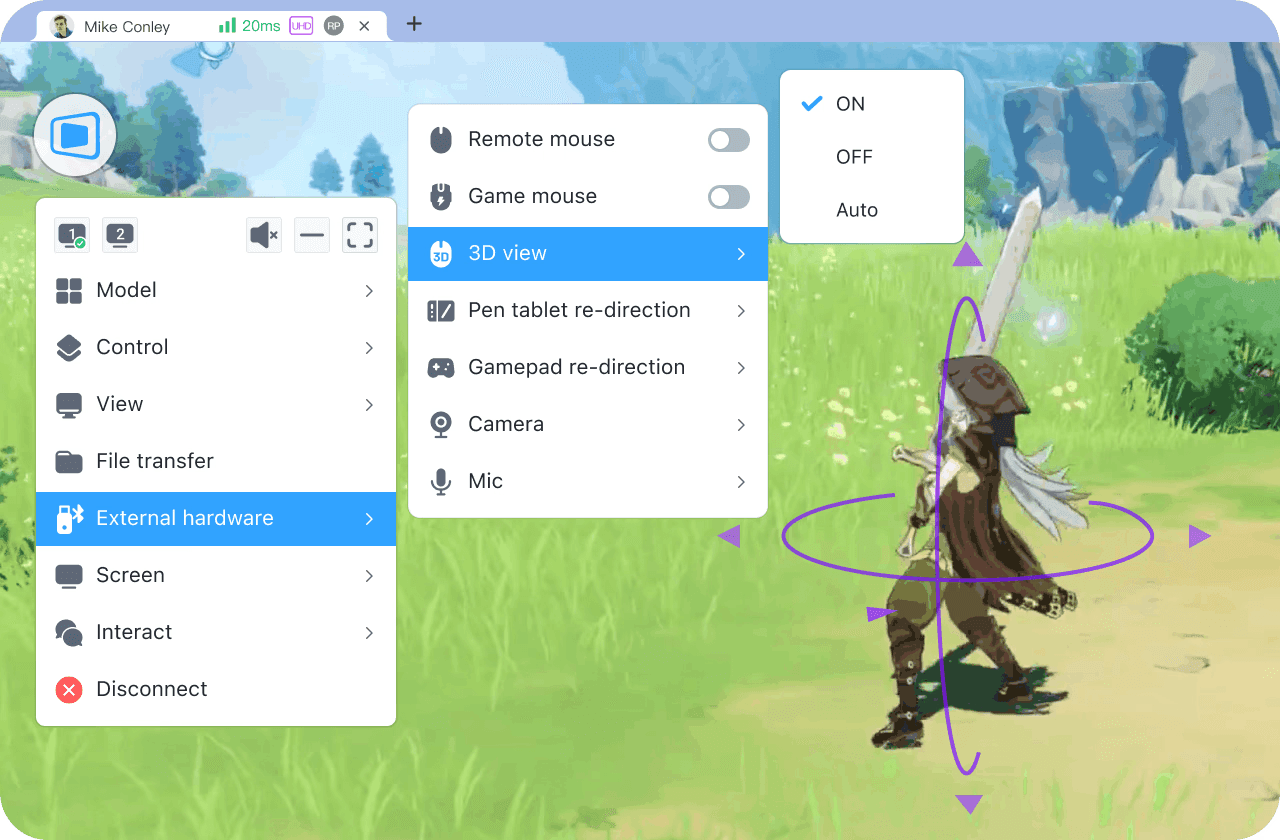For remote employees, using the right remote work tools can help you stay connected, organized, and productive no matter where you are. For remote employees, choosing the right remote work software can make all the difference. Whether you're managing projects, communicating with team members, or controlling remote systems, the tools you use can significantly impact your productivity.
In this blog post, we explore the best remote control software, project management tools, and communication apps to help you work efficiently from anywhere. Which one suits you the best? Which one is a must? Let's find out together.
What Software Do You Use for Remote Work? How to Choose the Right?
There's no single solution for remote work—the best tools for remote work depend on your team's specific needs. To build an efficient workflow, it's crucial to combine different software types that cover communication, task management, monitoring, and secure access.
Here are the most effective tools for team productivity, grouped by category:
Best Remote Access Software – DeskIn
This type of software allows you to remotely access your work computer from home, even if no one is on the other end. DeskIn is a top-rated choice, offering unattended remote access and fast connections. It also screen mirror your computer, or transfer files remotely, making it ideal for secure access and remote file management.
Best Remote Worker Monitoring Program – ActivTrak
Tools like ActivTrak help teams understand how work time is spent. They track productivity levels, detect bottlenecks, and generate detailed reports. These insights are especially valuable for managers aiming to improve accountability and output across distributed teams.
Best Project Management Tools – Toggl
This type of remote work software includes features like task planning, progress tracking, and team calendars. Toggl makes it easy to break down large projects into clear steps, assign responsibilities, and keep everyone aligned.
Best Communication & Collaboration Software – Microsoft Teams
Communication is key in remote setups. Microsoft Teams offers video conferencing, group chats, shared files, and app integrations—all in one place. It helps remote teams collaborate in real time, reducing delays and misunderstandings.
By selecting the right tools from each category, your remote team can stay connected, secure, and highly productive, no matter where each member works from.
Part 1. 3 Best Remote Access Software for Working
To access your work environment from anywhere, you need a reliable remote work app. In this section, we'll introduce the 3 best remote access software options that allow you to control office devices, retrieve files, and maintain full productivity, no matter where you're working from.
1. DeskIn – Secure, Smooth, Versatile Remote Desktop
Best for: Remote professionals needing to access multiple devices, distributed teams collaborating on visual projects, digital nomads working across various locations

DeskIn is a powerful software to work remotely from home, offering a full-featured remote desktop and virtual workspace experience. With DeskIn, you can effortlessly access remote devices by connecting two computers.
Beyond basic control, DeskIn is built for remote team collaboration. It includes features like screen extension, screen projection, clipboard sharing, voice calls, annotations, and a built-in whiteboard that enables real-time brainstorming and visual teamwork—ideal for hybrid or distributed teams.
As a remote employee's PC setup solution, DeskIn supports Android, Windows, macOS, and iOS, ensuring seamless cross-platform access. Backed by over 200 global nodes, it delivers up to 4K display quality with latency under 40ms, providing a fast and responsive experience.
Security is also top-tier. DeskIn uses AES-256 encryption, allows password-protected wireless access, and offers screen-locking features to keep sessions private and safe. Whether you're managing a distributed team or working solo from home, DeskIn is one of the best remote work softwares to stay connected and productive.
👉 Click here to download DeskIn
Related:
2. TeamViewer – Solid Remote Support Solution for Teams
Best for: IT support agents assisting clients remotely, freelancers working from home on a laptop, small teams needing fast file transfers across devices

TeamViewer is a reliable work-from-home productivity tool that allows users to remotely connect to another PC with ease. It supports all major platforms and works even without an account, making it perfect for assisting non-technical users. Its standout feature is file transfer: you can drag and drop multiple large files (2–5GB) with no size limits, fast speeds (up to 20MB/s), and auto resume if disconnected.
However, its business pricing may be a barrier for startups, nonprofits, or small teams with light usage. While it's free for personal use, professional plans are costly, making DeskIn and other alternatives more practical for occasional remote collaboration.
3. Chrome Remote Desktop – Free & Lightweight Tool for Basic Remote Use
Best for: Budget-conscious startups using Microsoft Teams, educators, and short-term collaborators needing occasional remote access

Chrome Remote Desktop is a free work-from-home software ideal for users who just need basic remote control without complex collaboration. As part of Google's remote working technology suite, it works across Windows, macOS, Linux, ChromeOS, Android, and iOS. It's easy to set up—just install a Chrome extension on the host device—and supports stable, cross-platform access in BYOD environments.
However, it lacks built-in chat and drag-and-drop file transfers, making it unsuitable for teams needing richer interaction. If you require frequent file sharing or multi-device control, a more complete solution like DeskIn would be a better fit.
Part 2. 1 Remote Worker Monitoring Program for Teams
Beyond remote access tools, teams also need remote employee management software to track productivity, ensure accountability, and support performance reviews. Next, we introduce a powerful software to manage remote employees effectively.
4. ActivTrak – Monitor Employees By Tracking Time & Activity
Best for: Team leaders and HR managing remote or hybrid teams who want to quantify productivity and improve time management without intrusive surveillance

ActivTrak is a remote workforce management software ideal for teams using Microsoft Teams but needing deeper insights into employee time use, tool preferences, and focus. It helps managers identify low-efficiency projects or team members through data-driven analysis, enabling resource optimization and employee coaching rather than simple monitoring. Compatible with Windows, macOS, and available as a Chrome extension, it fits modern remote work environments well.
With its intuitive interface and easy deployment, ActivTrak excels as a work-from-home monitoring software that balances productivity tracking with employee privacy. Although some initial setup is needed to define productivity metrics and screenshots lack OCR support, it remains a top choice for managers seeking actionable insights without intrusive surveillance.
Part 3. 3 Project Management Tools for Remote Teams
To boost remote work productivity, having the right project management tools is essential for organizing tasks and aligning team efforts. Next, we highlight three top solutions that help enterprises excel in work from home for enterprise scenarios.
5. Toggl – Increase Remote Work Productivity
Best for: freelancers tracking billable hours, remote teams analyzing productivity, or anyone wanting to reduce time wasted on unproductive tasks

If you are looking for an intuitive way to track time, Toggl is a great option. It works on desktops, mobiles, and browsers, so you can log hours whether you are at your desk or on the go. The one-click timer allows you to effortlessly start and stop tasks without distractions, making it a valuable choice for tracking freelance projects.
What makes Toggl stand out is that it can turn your tracked time into clear reports, helping you see where your hours go. This is great for improving productivity or billing clients accurately. Also, it integrates with tools like Asana and Trello, so time logs can be easily synced with your project management workflow.
To boost productivity and help you maintain mental clarity, Toggl also supports the Pomodoro Technique. It can help you stay focused during work sessions and fully enjoy the regular breaks.
6. Hive – Centralized Project Planning for Remote Teams
Best for: remote teams needing flexible project views, freelancers tracking billable hours

Hive is a flexible project management tool for remote teams. Unlike basic to-do apps, it offers multiple views, such as Kanban boards, Gantt charts, Timeline, Table, and calendars. So you can track work the way you like. It also has a built-in timer to help log hours without switching apps, which helps to check work efficiency and save time on client reports.
Moreover, there are a lot of add-ons available for you to streamline your workflow. The Analytics add-on shows progress trends and brings information from the work done in Hive, especially useful for spotting bottlenecks. In addition, this remote work software also integrates with many tools like GitHub, Microsoft Teams, and Zoom. This feature lets you easily launch meetings or start another task directly from a task. Hive is one of the best remote IT support softwares.
7. Asana – Flexible Work-from-Home Task Coordination
Best for: Product, operations, and marketing teams that rely on clear project milestones and collaborative workflows; project managers in SMBs who need to assign and track tasks efficiently; and cross-departmental groups seeking a unified, visual workspace

Asana is a versatile remote work productivity tracker designed to streamline task and project management for teams working from home. Its clean interface and intuitive design make it easy for users, even without a project management background, to quickly organize tasks and monitor progress. The platform supports Windows, macOS, and mobile devices, and integrates well with Microsoft Teams, Slack, Gmail, and Outlook, enabling smooth collaboration across tools.
With flexible task views such as lists, boards, and timelines, Asana adapts to different team workflows and project complexities. It offers automation and dependency settings for advanced project planning, plus extensive third-party integrations to close the work loop. However, it lacks built-in time tracking, requiring external plugins, and some features are limited in the free version. Despite occasional complexity for new users, Asana remains a top choice for enhancing remote team coordination.
Part 4. 3 Communication & Collaboration Softwares for Meeting
Effective communication is the backbone of any successful remote team. In this section, we'll introduce three essential communication and collaboration software for meetings that help distributed teams stay connected, aligned, and productive, whether for daily check-ins or enterprise-level coordination.
8. Microsoft Teams – Enterprise-Grade Remote Communication Hub
Best for: manages complex projects across multiple teams, document-intensive teams

Microsoft Teams has proven to be more than just another messaging app. It's a digital office where communication naturally flows into collaboration. The instant messaging works seamlessly, whether you're sending quick updates to colleagues or sharing project files. You could remotely access Windows from devices. What stands out is how video meetings transition effortlessly into document collaboration. You can start a call, share screens to review materials, then jump straight into live-editing the same PowerPoint deck together.
The deep integration with Microsoft 365 also enhances teamwork. You can co-edit Word documents and Excel sheets in real-time with remote teammates, seeing their cursors and changes appear instantly. It is also capable of connecting other tools, like pulling in Dropbox files or Salesforce data. This integration can eliminate the effort of switching between apps and searching for files.
9. Zoom – Reliable Video Conferencing Tool for Small Teams
Best for: large webinars, interactive workshops, quick team check-ins

Zoom is a popular video conferencing tool for remote teams. It makes real-time communication easy. You can schedule meetings and add them to your calendar. With only one click, you can start an instant meeting. During calls, you can share your screen, chat, or split into breakout rooms for smaller discussions. Using Zoom, you can extend your screen.
Zoom also offers polls and analytics to keep meetings engaging and track insights. Whether you need a quick one-on-one call or a large webinar, Zoom adapts to your needs. Its reliable performance supports clear audio and video, even with many attendees.
10. Dropbox – Store & Share Files Online with Team Members
✏️ Best for: remote teams sharing large files, freelancers needing access across devices, or anyone who wants organized, secure document storage.

Dropbox is a cloud storage tool that makes remote file sharing simple. You can upload documents, spreadsheets, and other files, then access them from any device. It is a helpful tool for collaborating with teammates. You can edit the same design files without emailing versions back and forth.
With Dropbox, files can sync automatically across your devices, so you always have the latest copy. Once you have backed up a file on your desktop, you can view it via the mobile app. Plus, to keep files secure, Dropbox applies industry-leading encryption and lets you choose to send a link with view-only or edit permissions. Dropbox is one of the best secure remote desktops.
FAQs about Remote Work Software
Which software is best for remote work?
The best remote work software depends on your team's needs. For secure remote access, DeskIn stands out with smooth cross-platform control and built-in collaboration tools. To monitor team performance, ActivTrak provides detailed activity insights. For managing tasks and deadlines, Toggl offers intuitive project tracking. For meetings and daily syncs, Microsoft Teams delivers robust communication features.
What is the best software for data security for remote employees?
1Password is a leading password manager that helps remote teams securely store and share login credentials, credit cards, and confidential notes. It simplifies access control across tools while using end-to-end encryption, making it an essential layer of protection for remote employees working with sensitive information.
What other remote work software do you need?
Beyond access and communication, remote teams also benefit from tools for collaboration and ideation. Google Drive enables real-time document editing, cloud storage, and seamless file sharing. For visual collaboration, Miro provides a virtual whiteboard perfect for brainstorming, mapping workflows, and running engaging remote meetings.
Summary
Choosing the right Remote Work Software is key to maintaining productivity, collaboration, and visibility across distributed teams. From remote access tools and employee monitoring programs to project management platforms and communication apps, each category serves a specific purpose in supporting efficient work-from-home operations. By understanding your team's needs—be it secure access, performance tracking, task coordination, or virtual meetings—you can build a reliable remote tech stack.
Among the tools covered, DeskIn is especially worth considering for teams that need more than just basic access. It not only allows secure remote control of devices and file transfers but also supports screen extension, screen casting, whiteboarding, voice calls, annotation, and clipboard sharing—all in one platform. Whether you're troubleshooting, collaborating, or managing projects, DeskIn offers a comprehensive and user-friendly solution for modern remote teams. Hurry up to download DeskIn and simplify your workflow!
For remote employees, using the right remote work tools can help you stay connected, organized, and productive no matter where you are. For remote employees, choosing the right remote work software can make all the difference. Whether you're managing projects, communicating with team members, or controlling remote systems, the tools you use can significantly impact your productivity.
In this blog post, we explore the best remote control software, project management tools, and communication apps to help you work efficiently from anywhere. Which one suits you the best? Which one is a must? Let's find out together.
What Software Do You Use for Remote Work? How to Choose the Right?
There's no single solution for remote work—the best tools for remote work depend on your team's specific needs. To build an efficient workflow, it's crucial to combine different software types that cover communication, task management, monitoring, and secure access.
Here are the most effective tools for team productivity, grouped by category:
Best Remote Access Software – DeskIn
This type of software allows you to remotely access your work computer from home, even if no one is on the other end. DeskIn is a top-rated choice, offering unattended remote access and fast connections. It also screen mirror your computer, or transfer files remotely, making it ideal for secure access and remote file management.
Best Remote Worker Monitoring Program – ActivTrak
Tools like ActivTrak help teams understand how work time is spent. They track productivity levels, detect bottlenecks, and generate detailed reports. These insights are especially valuable for managers aiming to improve accountability and output across distributed teams.
Best Project Management Tools – Toggl
This type of remote work software includes features like task planning, progress tracking, and team calendars. Toggl makes it easy to break down large projects into clear steps, assign responsibilities, and keep everyone aligned.
Best Communication & Collaboration Software – Microsoft Teams
Communication is key in remote setups. Microsoft Teams offers video conferencing, group chats, shared files, and app integrations—all in one place. It helps remote teams collaborate in real time, reducing delays and misunderstandings.
By selecting the right tools from each category, your remote team can stay connected, secure, and highly productive, no matter where each member works from.
Part 1. 3 Best Remote Access Software for Working
To access your work environment from anywhere, you need a reliable remote work app. In this section, we'll introduce the 3 best remote access software options that allow you to control office devices, retrieve files, and maintain full productivity, no matter where you're working from.
1. DeskIn – Secure, Smooth, Versatile Remote Desktop
Best for: Remote professionals needing to access multiple devices, distributed teams collaborating on visual projects, digital nomads working across various locations

DeskIn is a powerful software to work remotely from home, offering a full-featured remote desktop and virtual workspace experience. With DeskIn, you can effortlessly access remote devices by connecting two computers.
Beyond basic control, DeskIn is built for remote team collaboration. It includes features like screen extension, screen projection, clipboard sharing, voice calls, annotations, and a built-in whiteboard that enables real-time brainstorming and visual teamwork—ideal for hybrid or distributed teams.
As a remote employee's PC setup solution, DeskIn supports Android, Windows, macOS, and iOS, ensuring seamless cross-platform access. Backed by over 200 global nodes, it delivers up to 4K display quality with latency under 40ms, providing a fast and responsive experience.
Security is also top-tier. DeskIn uses AES-256 encryption, allows password-protected wireless access, and offers screen-locking features to keep sessions private and safe. Whether you're managing a distributed team or working solo from home, DeskIn is one of the best remote work softwares to stay connected and productive.
👉 Click here to download DeskIn
Related:
2. TeamViewer – Solid Remote Support Solution for Teams
Best for: IT support agents assisting clients remotely, freelancers working from home on a laptop, small teams needing fast file transfers across devices

TeamViewer is a reliable work-from-home productivity tool that allows users to remotely connect to another PC with ease. It supports all major platforms and works even without an account, making it perfect for assisting non-technical users. Its standout feature is file transfer: you can drag and drop multiple large files (2–5GB) with no size limits, fast speeds (up to 20MB/s), and auto resume if disconnected.
However, its business pricing may be a barrier for startups, nonprofits, or small teams with light usage. While it's free for personal use, professional plans are costly, making DeskIn and other alternatives more practical for occasional remote collaboration.
3. Chrome Remote Desktop – Free & Lightweight Tool for Basic Remote Use
Best for: Budget-conscious startups using Microsoft Teams, educators, and short-term collaborators needing occasional remote access

Chrome Remote Desktop is a free work-from-home software ideal for users who just need basic remote control without complex collaboration. As part of Google's remote working technology suite, it works across Windows, macOS, Linux, ChromeOS, Android, and iOS. It's easy to set up—just install a Chrome extension on the host device—and supports stable, cross-platform access in BYOD environments.
However, it lacks built-in chat and drag-and-drop file transfers, making it unsuitable for teams needing richer interaction. If you require frequent file sharing or multi-device control, a more complete solution like DeskIn would be a better fit.
Part 2. 1 Remote Worker Monitoring Program for Teams
Beyond remote access tools, teams also need remote employee management software to track productivity, ensure accountability, and support performance reviews. Next, we introduce a powerful software to manage remote employees effectively.
4. ActivTrak – Monitor Employees By Tracking Time & Activity
Best for: Team leaders and HR managing remote or hybrid teams who want to quantify productivity and improve time management without intrusive surveillance

ActivTrak is a remote workforce management software ideal for teams using Microsoft Teams but needing deeper insights into employee time use, tool preferences, and focus. It helps managers identify low-efficiency projects or team members through data-driven analysis, enabling resource optimization and employee coaching rather than simple monitoring. Compatible with Windows, macOS, and available as a Chrome extension, it fits modern remote work environments well.
With its intuitive interface and easy deployment, ActivTrak excels as a work-from-home monitoring software that balances productivity tracking with employee privacy. Although some initial setup is needed to define productivity metrics and screenshots lack OCR support, it remains a top choice for managers seeking actionable insights without intrusive surveillance.
Part 3. 3 Project Management Tools for Remote Teams
To boost remote work productivity, having the right project management tools is essential for organizing tasks and aligning team efforts. Next, we highlight three top solutions that help enterprises excel in work from home for enterprise scenarios.
5. Toggl – Increase Remote Work Productivity
Best for: freelancers tracking billable hours, remote teams analyzing productivity, or anyone wanting to reduce time wasted on unproductive tasks

If you are looking for an intuitive way to track time, Toggl is a great option. It works on desktops, mobiles, and browsers, so you can log hours whether you are at your desk or on the go. The one-click timer allows you to effortlessly start and stop tasks without distractions, making it a valuable choice for tracking freelance projects.
What makes Toggl stand out is that it can turn your tracked time into clear reports, helping you see where your hours go. This is great for improving productivity or billing clients accurately. Also, it integrates with tools like Asana and Trello, so time logs can be easily synced with your project management workflow.
To boost productivity and help you maintain mental clarity, Toggl also supports the Pomodoro Technique. It can help you stay focused during work sessions and fully enjoy the regular breaks.
6. Hive – Centralized Project Planning for Remote Teams
Best for: remote teams needing flexible project views, freelancers tracking billable hours

Hive is a flexible project management tool for remote teams. Unlike basic to-do apps, it offers multiple views, such as Kanban boards, Gantt charts, Timeline, Table, and calendars. So you can track work the way you like. It also has a built-in timer to help log hours without switching apps, which helps to check work efficiency and save time on client reports.
Moreover, there are a lot of add-ons available for you to streamline your workflow. The Analytics add-on shows progress trends and brings information from the work done in Hive, especially useful for spotting bottlenecks. In addition, this remote work software also integrates with many tools like GitHub, Microsoft Teams, and Zoom. This feature lets you easily launch meetings or start another task directly from a task. Hive is one of the best remote IT support softwares.
7. Asana – Flexible Work-from-Home Task Coordination
Best for: Product, operations, and marketing teams that rely on clear project milestones and collaborative workflows; project managers in SMBs who need to assign and track tasks efficiently; and cross-departmental groups seeking a unified, visual workspace

Asana is a versatile remote work productivity tracker designed to streamline task and project management for teams working from home. Its clean interface and intuitive design make it easy for users, even without a project management background, to quickly organize tasks and monitor progress. The platform supports Windows, macOS, and mobile devices, and integrates well with Microsoft Teams, Slack, Gmail, and Outlook, enabling smooth collaboration across tools.
With flexible task views such as lists, boards, and timelines, Asana adapts to different team workflows and project complexities. It offers automation and dependency settings for advanced project planning, plus extensive third-party integrations to close the work loop. However, it lacks built-in time tracking, requiring external plugins, and some features are limited in the free version. Despite occasional complexity for new users, Asana remains a top choice for enhancing remote team coordination.
Part 4. 3 Communication & Collaboration Softwares for Meeting
Effective communication is the backbone of any successful remote team. In this section, we'll introduce three essential communication and collaboration software for meetings that help distributed teams stay connected, aligned, and productive, whether for daily check-ins or enterprise-level coordination.
8. Microsoft Teams – Enterprise-Grade Remote Communication Hub
Best for: manages complex projects across multiple teams, document-intensive teams

Microsoft Teams has proven to be more than just another messaging app. It's a digital office where communication naturally flows into collaboration. The instant messaging works seamlessly, whether you're sending quick updates to colleagues or sharing project files. You could remotely access Windows from devices. What stands out is how video meetings transition effortlessly into document collaboration. You can start a call, share screens to review materials, then jump straight into live-editing the same PowerPoint deck together.
The deep integration with Microsoft 365 also enhances teamwork. You can co-edit Word documents and Excel sheets in real-time with remote teammates, seeing their cursors and changes appear instantly. It is also capable of connecting other tools, like pulling in Dropbox files or Salesforce data. This integration can eliminate the effort of switching between apps and searching for files.
9. Zoom – Reliable Video Conferencing Tool for Small Teams
Best for: large webinars, interactive workshops, quick team check-ins

Zoom is a popular video conferencing tool for remote teams. It makes real-time communication easy. You can schedule meetings and add them to your calendar. With only one click, you can start an instant meeting. During calls, you can share your screen, chat, or split into breakout rooms for smaller discussions. Using Zoom, you can extend your screen.
Zoom also offers polls and analytics to keep meetings engaging and track insights. Whether you need a quick one-on-one call or a large webinar, Zoom adapts to your needs. Its reliable performance supports clear audio and video, even with many attendees.
10. Dropbox – Store & Share Files Online with Team Members
✏️ Best for: remote teams sharing large files, freelancers needing access across devices, or anyone who wants organized, secure document storage.

Dropbox is a cloud storage tool that makes remote file sharing simple. You can upload documents, spreadsheets, and other files, then access them from any device. It is a helpful tool for collaborating with teammates. You can edit the same design files without emailing versions back and forth.
With Dropbox, files can sync automatically across your devices, so you always have the latest copy. Once you have backed up a file on your desktop, you can view it via the mobile app. Plus, to keep files secure, Dropbox applies industry-leading encryption and lets you choose to send a link with view-only or edit permissions. Dropbox is one of the best secure remote desktops.
FAQs about Remote Work Software
Which software is best for remote work?
The best remote work software depends on your team's needs. For secure remote access, DeskIn stands out with smooth cross-platform control and built-in collaboration tools. To monitor team performance, ActivTrak provides detailed activity insights. For managing tasks and deadlines, Toggl offers intuitive project tracking. For meetings and daily syncs, Microsoft Teams delivers robust communication features.
What is the best software for data security for remote employees?
1Password is a leading password manager that helps remote teams securely store and share login credentials, credit cards, and confidential notes. It simplifies access control across tools while using end-to-end encryption, making it an essential layer of protection for remote employees working with sensitive information.
What other remote work software do you need?
Beyond access and communication, remote teams also benefit from tools for collaboration and ideation. Google Drive enables real-time document editing, cloud storage, and seamless file sharing. For visual collaboration, Miro provides a virtual whiteboard perfect for brainstorming, mapping workflows, and running engaging remote meetings.
Summary
Choosing the right Remote Work Software is key to maintaining productivity, collaboration, and visibility across distributed teams. From remote access tools and employee monitoring programs to project management platforms and communication apps, each category serves a specific purpose in supporting efficient work-from-home operations. By understanding your team's needs—be it secure access, performance tracking, task coordination, or virtual meetings—you can build a reliable remote tech stack.
Among the tools covered, DeskIn is especially worth considering for teams that need more than just basic access. It not only allows secure remote control of devices and file transfers but also supports screen extension, screen casting, whiteboarding, voice calls, annotation, and clipboard sharing—all in one platform. Whether you're troubleshooting, collaborating, or managing projects, DeskIn offers a comprehensive and user-friendly solution for modern remote teams. Hurry up to download DeskIn and simplify your workflow!






